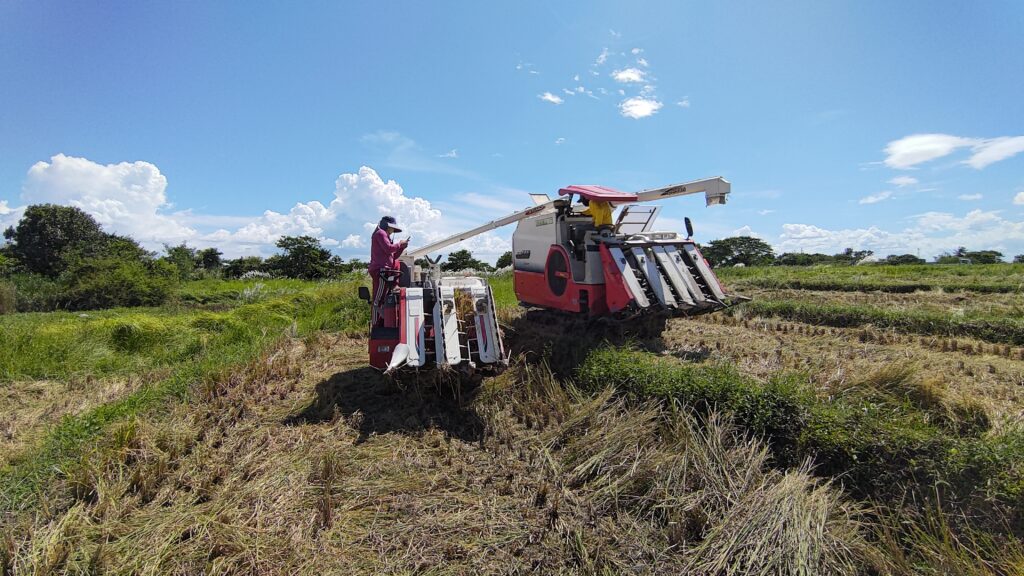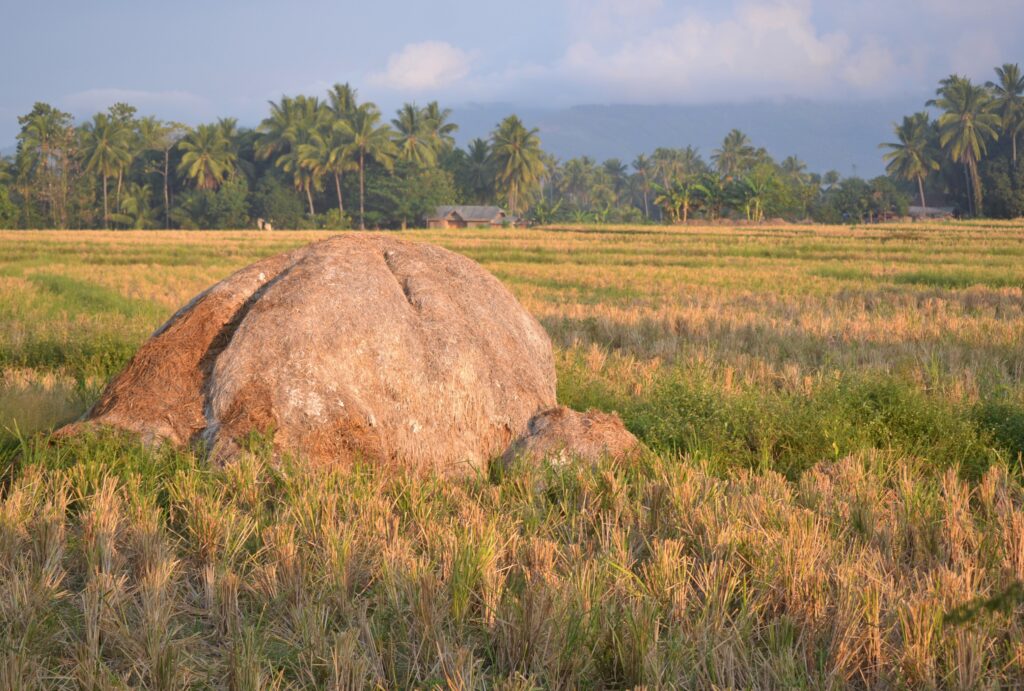Converting methane from rice straw into clean fuel
by Henrylito D. Tacio After a period of stagnation in the 2000s, the concentration of methane in the atmosphere has
It wasn’t until 2001—when the UN-sponsored Intergovernmental Panel on Climate Change (IPCC) submitted its report—that methane was finally given much-needed attention as “one of the most potent greenhouse gases on Earth.”
“Methane absorbs heat 21 times more than carbon dioxide and it has 9- to 15-year life time in the atmosphere over a 100-year period,” said Dr. Constancio Asis, Jr., a recipient of the 2011 Norman E. Borlaug International Agricultural Science and Technology Fellowship Award.
That’s disturbing. But what is more alarming is this report published in www.the conversation.com: “While carbon dioxide in the atmosphere has increased steadily, methane concentrations grew relatively slowly throughout the 2000s, but since 2007 have grown 10 times faster. Methane increased faster still in 2014 and 2015.”
The report said that about 60% of all methane emissions come from human activities. These include living sources: livestock, rice paddies and landfills, as well as fossil fuel sources, such as emissions during the extraction and use of coal and natural gas.
Methane was first scientifically identified by Italian physicist Alessandro Volta in 1776. He collected some “flammable air” from the marsh straddling Italy and Switzerland. It wasn’t until 1778 that he was able to isolate the pure gas. The person credited for naming it as “methane” was German chemist August Wilhelm von Hofmann who derived the name from methanol.
Greenhouse gas
Today, it is commonly known that methane is a very simple molecule (one carbon surrounded by four hydrogen atoms) and is created predominantly by bacteria that feed on organic material. “In dry conditions, there is plenty of atmospheric oxygen, and so aerobic bacteria which produce carbon dioxide are preferred,” explained Dr. Schmidt.
Although a non-toxic, colorless, and odorless gas, methane is highly combustible. At room temperature, methane is a gas less dense than air. It melts at –183°C and boils at –164°C. It is not very soluble in water. Methane is combustible, and mixtures of about 5%-15% in air are explosive.
Methane, like carbon dioxide, is a greenhouse gas. Also included are chlorofluorocarbons (usually released from air conditioners and refrigerators) and the nitrogen compound (particularly, nitrous oxide, which comes from burning fossil fuels and fertilizers). Ground-level ozone, produced by burning fossil fuels, is also considered a greenhouse gas.
“Even if we were able to stop them tomorrow, these greenhouse gases will continue to have an effect for centuries,” Secretary-General Michel Jarraud of the UN World Meteorological Organization said in a statement quoted by the Agence France Presse (AFP).
In 2015, the IPCC said methane accounted for about 16% of global greenhouse gas emissions. In comparison, carbon dioxide accounted for more than three-quarters of plant-warming emissions.
Growing faster
According to a conversation.com report, methane concentration in the atmosphere is “growing faster than any time in the past 20 years. The increase is largely driven by the growth in food production.”
The report considered methane from food production as the next wildcard in climate change.
“If we cut methane emissions now, this will have a rapid impact on methane concentrations in the atmosphere and therefore on global warming,” it pointed out.
The Philippines is one of the contributors of methane emissions. In 2014, for instance, the country’s total methane emissions were approximately 41.87 million metric tons of carbon dioxide equivalent.
Most of these emissions come from rice cultivation. The Philippines is one of the world’s top rice producers. Flooded rice paddies emit as much as 500 million tons of methane, around 20% of total man-made emissions of this gas, according to the Laguna-based International Rice Research Institute (IRRI).
The Journal Science reported that atmospheric concentration of methane has more than doubled during the last 300 years and is increasing at an annual rate of about 1% each year.
Straw Innovations
Enter Dr. Craig Jamieson, a British national who’s originally trained in horticulture and has a master’s degree in international rural development. His work has taken him across Africa and Asia developing bioenergy solutions that enhance rather than compete with food production.
In 2016, with support from the United Kingdom government, he set up his own company – Straw Innovations (SI), Ltd. – to establish a pilot plant making clean fuel from rice straw in tandem with the Laguna-based Southeast Asian Regional Center for Graduate Study and Research in Agriculture (SEARCA).
That is how the Rice Straw Biogas Hub works; it produces clean energy accessible to remote and underserved rural communities. “(It) generates biogas as clean energy from waste rice straw and provides an innovative package of technology services for rice farmers,” said Dr. Glenn B. Gregorio, SEARCA Director.
The clean fuel is used for drying the grains and milling thereafter. “We asked farmers and their preference was to use the energy for productive purposes rather than domestic use. So, that’s what we are doing,” Jamieson explained.
According to Jamieson, his UK-registered group has established a rice drying service through the combustion of biogas from rice straw.
Drying is the most critical operation after harvesting a rice crop. When rice is harvested, it contains up to 25% moisture. The goal of rice drying is to reduce its moisture content to meet the recommended levels for sale and long-term storage.
“It is important to dry rice grain as soon as possible after harvesting – ideally within 24 hours,” IRRI explained. “Delays in drying, incomplete drying or ineffective drying will reduce grain quality and result in losses.”
Rice harvesting
But before drying, rice must be harvested first. Here, the SI is introducing a rice harvesting system that it has developed over five years. “The main problems are in getting the rice straw out of the field and to a place where it can be used,” he said.
The likely solution: the 5-in-1 harvesting technology, referring to a machine, which is said to be the first of its kind in the world. “Our machine performs in one pass of the field and performs the five separate operations in conventional straw collection – harvester, chopper, rake, densifier, and collection. It’s more efficient and, critically, it works even in wet conditions (muddy or flooded fields),” Jamieson pointed out.
The collected palay is then brought to another machine where the grain is separated from the rice straw. “At the biogas hub, a dryer dries the rice grain with energy from the rice wastes, another removes the husk and another mills the grain, thus giving the final product,” Jamieson said.
The dryer takes about 12 hours for the grain to dry, Jamieson said. “The technological innovation is to use rice straw to power the process,” he said. “We give farmers the option to retain ownership of their grains throughout the process.
“In some of today’s cases, farmers only get 4% of the purchase price of rice. In our model, farmers can use our harvesting, drying, and milling services and then sell the finished products to the public. We just take our cut after the sale…”
To produce methane in the hub, water is added to the rice straw. The methane gas is a direct substitute for diesel or kerosene in conventional dryers.
“In the past, the government tried to give out free rice dryers but as soon as something broke, the dryers were no longer used,” Jamieson said. “Our business model is to operate our equipment and offer it as a service to farmers. They pay us a service fee but don’t need to buy or operate our equipment.”
During the process, the rice straw gets broken down into fertilizer, which can be used to fertilize the rice. Or it can be applied as organic fertilizer for crops, vegetables, and fruits. “It can be used for anything,” he said.
Glimmer of hope
Jamieson is very hopeful about the Rice Straw Biogas Hub. He believed the biogas hub can prevent the burning of millions of tons of rice straw as waste across the region each year. “The hub has exciting potential to bring clean energy access to the 150 million small-scale rice farmers who need it to process their crops and generate new income opportunities,” he said.
Dr. Gregorio is very optimistic, too. “Rice straw biogas is an innovative way to increase our efficiency in producing rice and maximize the utilization of its by-products like straw for energy,” he said in an exclusive interview. “(It’s) a good example for a circular economy – nothing goes to waste. This is carbon-wise rice farming.”
Jamieson is hoping the project will help address energy challenges faced by developing countries like the Philippines. “As a bioenergy specialist, the potential of rice straw made me drool,” he said. “All around the world, the hunt has been on for a large amount of biomass that can be used for delivering clean energy without competing with anything else.” – ###




